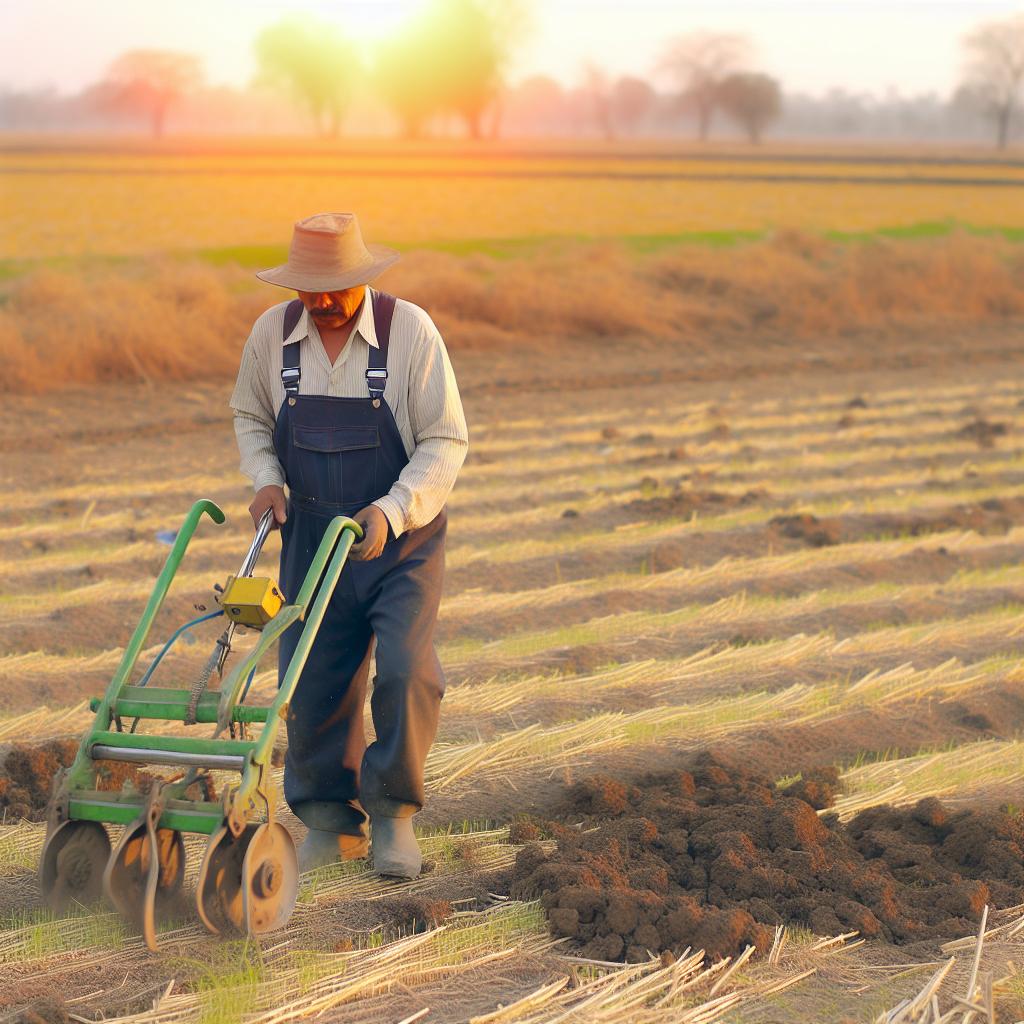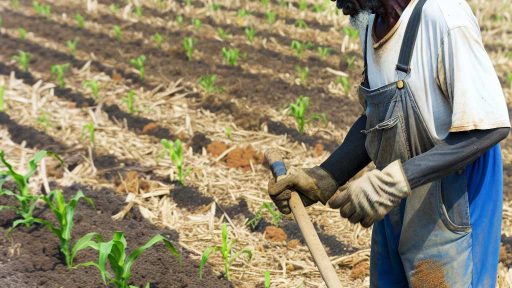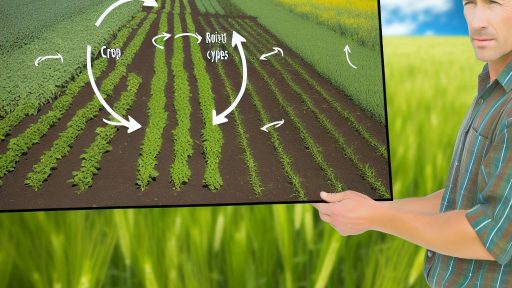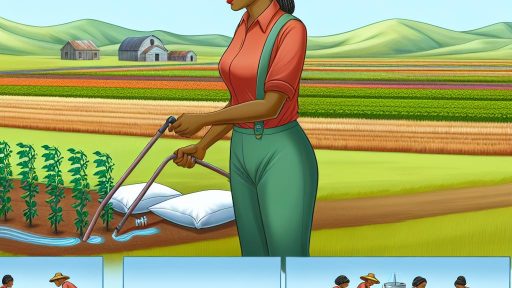Introduction to Conservation Tillage and Its Importance
Conservation tillage is a farming practice that minimizes soil disturbance.
This method helps maintain soil structure and health.
Farmers use various tools to implement conservation tillage effectively.
These tools play a crucial role in sustainable agriculture.
By reducing soil erosion, they protect valuable topsoil.
Moreover, conservation tillage enhances water retention in the soil.
This approach ultimately improves crop yields over time.
Farmers face challenges from climate change and soil degradation.
Adopting conservation tillage can help mitigate these issues.
Furthermore, it promotes biodiversity in agricultural ecosystems.
Using these practices contributes to a healthier environment.
Farmers across the globe adopt conservation tillage for its benefits.
Overview of Key Conservation Tillage Tools
Importance of Conservation Tillage
Conservation tillage plays a critical role in sustainable farming.
This practice helps improve soil health and reduce erosion.
Moreover, it enhances water retention in fields.
Transform Your Agribusiness
Unlock your farm's potential with expert advice tailored to your needs. Get actionable steps that drive real results.
Get StartedTypes of Tools for Conservation Tillage
Various tools facilitate effective conservation tillage practices.
Each tool serves a unique function aimed at optimizing soil management.
Chisel Plows
Chisel plows operate at deeper soil levels without turning the soil.
They break up compacted layers while maintaining residue cover on the surface.
This tool improves drainage and root development in crops.
Strip Till Systems
Strip till systems prepare narrow seedbeds while leaving the rest of the field untilled.
This approach reduces soil disturbance and increases efficiency.
Additionally, it enhances moisture retention for the crop rows.
Rotary Harrows
Rotary harrows work well for breaking up soil clumps and mixing residue.
They create a fine seedbed that supports plant growth.
Moreover, they help in weed control during the establishment phase.
Additional Considerations
Choosing the right tools depends on specific farm needs and conditions.
Farmers should assess their soil type and crop requirements.
Furthermore, integrating multiple tools can enhance conservation efforts.
Collaboration with local agricultural experts can also provide valuable insights.
Benefits of Using Conservation Tillage Tools for Soil Health
Improved Soil Structure
Conservation tillage enhances soil structure significantly.
This practice reduces soil compaction over time.
As a result, the soil becomes more aerated and porous.
Consequently, roots can penetrate more easily.
Increased Organic Matter
Using conservation tillage promotes the accumulation of organic matter.
Soil microbes benefit from the increased organic residues.
This accelerates nutrient cycling in the soil.
Thus, farmers can see improved crop yields.
Enhanced Water Retention
Conservation tillage helps the soil retain moisture better.
Showcase Your Farming Business
Publish your professional farming services profile on our blog for a one-time fee of $200 and reach a dedicated audience of farmers and agribusiness owners.
Publish Your ProfileMoisture retention is crucial during dry periods.
This practice reduces the need for frequent irrigation.
As a result, farmers can save both time and resources.
Reduction of Soil Erosion
One of the notable benefits is the reduction of soil erosion.
Less soil erosion leads to better land sustainability.
Conservation tillage creates protective layers on the soil surface.
These layers shield the soil from wind and water erosion.
Support for Biodiversity
These practices support a diverse range of organisms.
Beneficial insects and microorganisms thrive in healthy soils.
Healthy ecosystems contribute to pest control naturally.
This ecological balance can reduce pesticide dependence.
Cost-Effectiveness
Conservation tillage tools can be cost-effective in the long run.
Less preparation time means lower labor costs.
Moreover, reduced erosion can lessen soil replacement expenses.
Farmers find that long-term savings significantly outweigh initial investments.
Uncover the Details: Using Terracing to Improve Water Conservation on Slopes
Types of Conservation Tillage Tools: A Detailed Examination
Overview of Conservation Tillage
Conservation tillage enhances soil health and reduces erosion.
This practice minimizes disturbance to the soil surface.
Farmers use various tools to implement this approach effectively.
Primary Tools Used in Conservation Tillage
Different tools serve specific functions in conservation tillage.
Understanding these tools helps farmers make informed decisions.
Chisel Plow
The chisel plow loosens soil without turning it over.
It promotes better root growth and enhances water infiltration.
Farmers appreciate its ability to break up compacted layers.
Disc Harrow
The disc harrow excels at cutting and mixing soil surfaces.
This tool effectively incorporates crop residues into the ground.
Furthermore, it helps level the field for uniform planting.
Strip Tiller
Strip tillers create narrow strips of tilled soil.
This method reduces soil erosion while allowing for planting.
Additionally, it conserves moisture and improves soil health.
Specialized Equipment for Conservation Tillage
Farmers also use specialized equipment for enhanced conservation.
Such tools cater to specific needs and improve efficiency.
No-Till Drill
No-till drills plant seeds directly into untouched soil.
This approach minimizes soil disturbance and conserves moisture.
Farmers like their ability to encourage soil structure preservation.
Seeding Equipment
Modern seeding equipment assists in planting cover crops.
Additionally, precision seeding technology optimizes planting depth.
These advancements improve crop establishment and productivity.
Importance of Proper Maintenance
Maintaining conservation tillage tools is crucial for their efficiency.
Regular inspections prevent costly repairs and enhance durability.
Showcase Your Farming Business
Publish your professional farming services profile on our blog for a one-time fee of $200 and reach a dedicated audience of farmers and agribusiness owners.
Publish Your ProfileFarmers should clean and lubricate tools after each use.
Furthermore, they should store equipment in a sheltered area.
Significance of Conservation Tillage Tools
Understanding various conservation tillage tools is essential.
These tools help promote sustainable farming practices.
Farmers can optimize their performance through proper maintenance.
Delve into the Subject: Permaculture Farm Planning Strategies For Optimal Yield
Essential Equipment for No-Till Farming
Seeders and Planters
Seeders and planters are critical for no-till farming.
They enable farmers to plant seeds directly into undisturbed soil.
This method preserves soil structure and moisture.
Farmers can choose from various types of seeders based on their needs.
Coulter Seeders
Coulter seeders employ rotating blades to create furrows in soil.
They effectively cut through residue and prepare the soil for planting.
This type of seeder is ideal for planting in heavy crop residues.
Drill Seeders
Drill seeders distribute seeds evenly across the field.
They have multiple rows and provide consistent depth control.
Farmers prioritize drill seeders for planting various crops.
Precision Planters
Precision planters offer advanced technology for accuracy.
They ensure optimal seed placement and spacing.
Farmers appreciate their ability to improve yields.
Interplanting Equipment
Interplanting equipment allows farmers to plant multiple crops together.
This method enhances biodiversity and reduces pest pressure.
Farmers value this approach for efficient land use.
Maintenance Tools
Regular maintenance tools are essential for seeders and planters.
Farmers should keep tools in optimal condition for best performance.
Common maintenance tasks include cleaning and sharpening blades.
Selecting Appropriate No-Till Equipment
Choosing the right seeder or planter is vital for success.
Farmers must evaluate their specific needs and conditions.
Investing in quality equipment pays off in the long run.
Discover More: Enhancing Pest Control through Crop Rotation Methods
Cover Crops and Their Role in Conservation Tillage Systems
Defining Cover Crops
Cover crops are plant species grown primarily to improve soil health.
They cover the soil between main crop production cycles.
Farmers cultivate these crops for various benefits, such as erosion control.
Additionally, they enhance nutrient cycling within the soil.
Benefits of Using Cover Crops
Cover crops provide numerous advantages to farming systems.
- They reduce soil erosion by stabilizing the soil structure.
- These crops improve soil fertility through organic matter addition.
- They promote biodiversity by supporting various soil organisms.
- Cover crops can suppress weeds, reducing dependence on herbicides.
Types of Cover Crops
Different types of cover crops serve specific purposes in conservation tillage.
- Legumes, such as clover and vetch, fix nitrogen in the soil.
- Grasses, like rye and oats, improve soil structure and suppress weeds.
- Brassicas, such as radishes, enhance soil aeration with their deep roots.
Integrating Cover Crops into Tillage Systems
Integration of cover crops requires careful planning and management.
Farmers should consider the timing of planting and termination.
This ensures that cover crops provide maximum benefits before cash crops.
Working with local agronomists can optimize cover crop strategies.
Challenges and Considerations
While cover crops offer benefits, challenges may arise.
Showcase Your Farming Business
Publish your professional farming services profile on our blog for a one-time fee of $200 and reach a dedicated audience of farmers and agribusiness owners.
Publish Your ProfileSome farmers might face issues with water availability during growth.
Others might be concerned about increased labor demands.
Understanding site-specific conditions is crucial for successful implementation.
Uncover the Details: Organic Waste Solutions for Modern Farmers

Maintenance Tips for Conservation Tillage Tools to Enhance Longevity
Regular Cleaning
Keep your tillage tools free of debris after each use.
Use a brush or air compressor to remove dirt and residue.
A clean tool helps maintain optimal performance.
Pay particular attention to areas that collect soil and crop material.
Inspect for Wear and Tear
Perform routine inspections on all tools and parts.
Look for signs of rust, wear, or damage.
Replace worn-out parts immediately to prevent further issues.
Regular inspection improves tool lifespan and efficiency.
Proper Lubrication
Lubricate moving parts frequently to reduce friction.
Use appropriate grease or oil recommended by the manufacturer.
Proper lubrication helps prevent rust and enhances performance.
Follow a lubrication schedule for best results.
Safe Storage Practices
Store your conservation tillage tools in a dry environment.
Avoid leaving tools exposed to rain or moisture.
Use a protective cover if tools must remain outside.
Organized storage can prevent accidental damage.
Calibration and Adjustments
Regularly calibrate your tools to ensure correct operation.
Adjust settings based on different soil types and conditions.
Consult the user manual for specific calibration instructions.
Proper calibration enhances efficiency and effectiveness.
Utilizing Quality Components
Invest in high-quality parts and accessories for your tools.
High-quality components last longer and improve performance.
Research different brands and read user reviews before purchasing.
Reliable components provide better value over time.
Train Operators
Ensure all operators are trained on proper tool usage.
Training reduces the risk of misuse and accidents.
Well-trained operators can maximize tool effectiveness.
Conduct regular workshops to refresh skills and knowledge.
Case Studies: Successful Implementation of Conservation Tillage Tools
Innovative Approaches at Greenfield Farms
Greenfield Farms adopted conservation tillage in 2021.
They replaced traditional plowing methods with no-till practices.
This change improved soil health significantly.
They noticed increased yields for corn and soybeans.
Farmers at Greenfield reported reduced erosion as well.
They also documented lower equipment costs.
Their commitment to sustainable practices sets an example.
Success Story: River Valley Agronomy
River Valley Agronomy implemented strip-till technology.
Showcase Your Farming Business
Publish your professional farming services profile on our blog for a one-time fee of $200 and reach a dedicated audience of farmers and agribusiness owners.
Publish Your ProfileThis allowed targeted tillage in specific rows.
Consequently, they achieved excellent seedbed preparation.
The method reduced overall soil disturbance.
In doing so, they enhanced moisture retention.
Profits increased as a result of improved crop performance.
Farmers felt empowered by their adoption of technology.
Transformative Results at Meadowbrook Estates
Meadowbrook Estates converted to conservation tillage in 2019.
They focused on using cover crops to benefit soil structure.
This tactic decreased reliance on chemical fertilizers.
They observed diverse flora returning to their fields.
Winter cover crops provided excellent erosion control.
Farmers were pleased with the sustainability of their practices.
The estates reported a substantial increase in earthworm populations.
Lessons Learned from Highview Farms
Highview Farms experimented with various tillage techniques.
They found that implementing cover crops improved soil health.
Farmers shared knowledge during workshops and discussions.
This led to a community-wide drive for conservation tillage.
They collectively benefited from shared resources and insights.
Highview Farms became a model for peer-led learning.
This initiative demonstrated the power of collaboration.
Future Trends in Conservation Tillage Tools and Technology
Advancements in Equipment Design
Manufacturers are focusing on creating more efficient tillage tools.
This includes equipment that reduces soil disturbance significantly.
New designs incorporate precision agriculture technologies seamlessly.
Moreover, they support variable rate planting and nutrient application.
Farmers can expect lighter, stronger, and more versatile tools.
Integration of Smart Farming Technology
Smart farming tools are becoming increasingly popular in conservation tillage.
These tools utilize data analytics to improve decision-making processes.
Farmers can remotely monitor soil conditions and crop health effectively.
Additionally, sensors embedded in tillage equipment enhance efficiency.
The integration of AI assists in predictive maintenance and operational optimization.
Sustainability and Environmental Impact
Future tillage tools will emphasize sustainability practices.
They aim to reduce carbon footprints during agricultural operations.
New materials and processes will focus on recycling and sustainability.
Farmers are encouraged to adopt environmentally friendly practices.
Furthermore, these technologies will ensure compliance with regulations.
Collaboration and Data Sharing
Collaboration among farmers will improve conservation practices.
Data sharing platforms facilitate the exchange of information and insights.
This leads to collective learning and enhanced farming methods.
Farmers can join networks to access valuable industry trends and strategies.
Collaboration ultimately fosters innovation and progress in agriculture.
Showcase Your Farming Business
Publish your professional farming services profile on our blog for a one-time fee of $200 and reach a dedicated audience of farmers and agribusiness owners.
Publish Your ProfileEducation and Training Initiatives
Education will play a crucial role in the adoption of new tools.
Workshops and training programs will become more widely available.
Farmers will learn about the benefits of conservation tillage techniques.
Additionally, hands-on experience with new technologies will be emphasized.
These initiatives will ensure farmers are well-equipped to implement changes.
Additional Resources
What is Sustainable Agriculture? – Resources – SARE
Acting on Climate through Sustainable Agriculture: White House …




